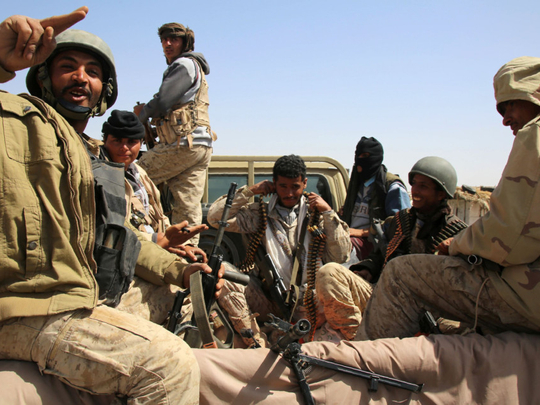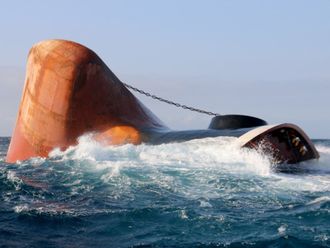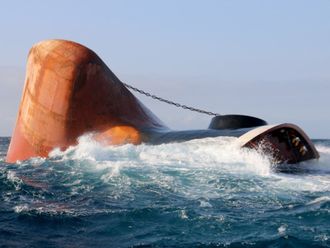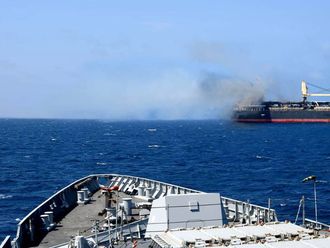
YEMEN: With the support of the UAE Armed Forces operating within the Saudi-led Arab Coalition, Yemen's Red Sea Coast battlefronts are witnessing expansion, greater military momentum and successive victories by the Yemeni National Resistance Forces and the Brigades Al-‘Amalaqah and Tihama Resistance forces.
The Yemeni forces are penetrating the front defence lines of the Iran-allied Al Houthi militias and defeating their elements in the qualitative and sudden operations that confused their ranks and degraded their military capabilities.
UAE-backed forces deployed in Yemen
The Emirates News Agency, WAM, highlighted the military victories and continuous progress on the field of the Yemeni Resistance Forces since the Arab Coalition recently launched the large-scale military operations towards Hodeidah City to clear it from the Houthi militias.
The forces completed one of the most important military operations in conjunction with the continuation of operations west of Taiz Governorate in more than one direction to "tighten the screws" on Al Houthis and cut off their main supply lines on the Red Sea Coast.
Advance continues
The Yemeni Resistance Forces continue their field advance in the south of Hodeidah from two directions in conjunction with the concentrated air strikes targeting military positions, gatherings and reinforcements of the Houthi militias in Al-Jarrahi, Zubaid, Tahita and Beit Al-Faqih districts.
The first battlefield is witnessing continuous progress by the resistance forces stationed in the north of Hayes District towards Al Jarrahi, while the second battlefield, the most advanced front towards Al Tahita District, is continuing to control the strategic locations overlooking Al Saqf village and the adjacent areas in the south of Tahita, which bring the forces very close to Hodeidah Port.
The Yemeni Resistance Forces have advanced more than 20 kilometres in the direction of the Tahita District and have succeeded in clinching important strategic positions, including Al-Hima Military Port, progressing towards the north and clearing Al-Faza area after the UAE Armed Forces carried out an amphibious operation and managed to destroy a command and control centre of Houthis so as to eliminate their assemblies and prevent them from planting naval mine as well as stop their threats to the international shipping route.
The military operations have resulted in the killing of more than 250 members of the Houthi militias in confrontations with the Yemeni Resistance Forces since its recent launch towards Hodeidah.
The members of the militia fled from the battlefronts leaving behind their equipment, weapons and dead bodies after the siege. They tightened the screws on the rebels and cut their supply lines to deliver the blows and painful and successive defeats that split their ranks and affected badly on the militia's military capabilities.
The large-scale military operations towards Hodeidah after taking control of important districts and battlefronts in the west of Taiz and cutting off supply lines of the Houthis resulted in regaining of Muza', al-Wazeya, Imary Camp and Kahboub battlefronts by the Yemeni Resistance Forces.
The latest qualitative military operations have caused unprecedented confusion among the militia members, questioning their concentration and ability to withstand the heavy blows in the battlefield from the Arab Coalition fighters after they targeted the Houthi commanders.
The last eight of them were the leaders of the Qataba, Al-Jarrahi, Hayes and Hamli battlefronts, which coincided with their successive defeats on the ground.
The Yemeni sources in Hodeidah reported the fleeing of supervisors and commanders appointed by the Houthi militias on the security posts in a number of districts in the governorate for the fear of being captured by Yemeni Resistance Forces after the successive victories on various battlefronts. Meanwhile, the Houthi militias also made checkpoints in the areas under their control to capture their fleeing members from the fighting fronts.
The Yemeni National Resistance Forces - backed by the Arab Coalition - are advancing in the north of the Red Sea Coast amidst massive on-going combing operations to eliminate the rebels' remaining pockets in some areas.
The Houthi rebels are losing ground and suffering huge casualties following frequent defeats at the hand of the pro-government forces.
The liberation of Muza', al-Wazeya, Al Barah and Maqbna - west of Taiz - from the clutches of the Houthi militias constituted a strategic depth for the Red Sea Coast in light of the rapid positive
shifts on the battlefields at a time when the pro-government forces are tightening the noose on the Houthi rebels and cutting off their key lines of supplies.
The liberation of Al Barah city - the gateway of military operations towards Taiz from the west front - has dealt a severe blow to the Houthi militias on the Red Sea Coast and contributed to efforts
to lift the siege on Taiz from the western side. These landmark victories have also disrupted the main supply lines of the rebels between Magbna and Taiz and enabled the resistance forces to take control of several fronts including Kahboub, Imary, Azzan, Al Mansoura, Sanfa and al-Wazeya after retaking the Al Mocka Junction.
Also, the liberation of the Imary Camp in Dhubab city in the Bab-el-Mandeb District has dealt another fatal blow to the Houthi militias on the Red Sea Coast as it connects the three districts of Bab-el-Mandeb with al-Wazeya and Al Mocha. This paradigm shift enabled the resistance forces to cut off land and sea supply lines up to Bab-el-Mandeb.
By taking control of the Imary Camp - the second largest military base on the Red Sea Coast after the Khalid Ibn Al Waleed camp in the fully liberated Muza' - the pro-government forces are protecting the southern outlet of the international navigation passage in the south of the Red Sea, whose liberation came from a well-thought military plan towards Al Barah through Al Mocha Junction and al-Wazeya. The advancement of the resistance forces has cut off the supply lines on most fronts in West Taiz, forcing the rebels to flee the battlegrounds and head towards the mountains or surrender.
During these battles, huge quantities of weapons and Iranian-made sophisticated mines were seized while engineering teams from the resistance and the Arab Coalition began clearing the liberated areas from mines planted by the Houthi rebels and expelling the remnants of the militia.
So far, the Arab Coalition has liberated a coastline of more than 350 kilometres, starting from Aden up to north Hayes, and expelled the Houthi rebels from the strategic area of Bab-el-Mandeb and secured the safe flow of international navigation in the Red Sea and Gulf of Aden.
The Arab Coalition is also playing a critical role in securing most Yemeni coasts from the Mahra Governorate up to the Red Sea Coast and is continuing to take control of more areas from the Houthi militia on the Red Sea Coast.
Also, the Coalition's efforts are on to fully retake the Red Sea Coast as part of its strategy to secure international navigation in the Red Sea and end the militia's threat to international navigation through the arbitrary planting of mines from their terrorist base at the Hodeidah Port.












